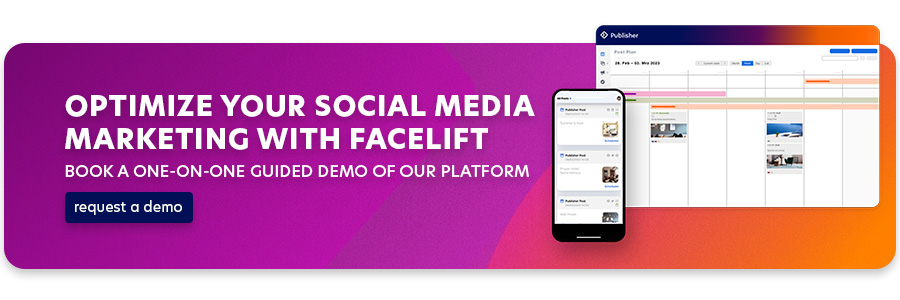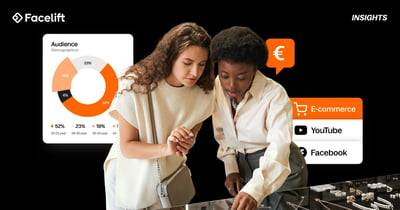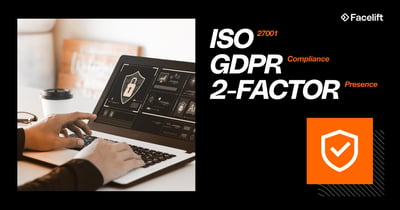With 4.62 billion active users worldwide and an average dwell time of 2 hours and 27 minutes daily, social media is more important than ever for brand management. In fact, 51% of brands use social media monitoring as part of their marketing efforts.
Effective monitoring has become a key component for businesses to ensure brand awareness, customer satisfaction, and competitive advantage in the digital age. Let's talk about how social media monitoring can aid your brand management and will cast light on the following aspects:
- Definition and importance of social media monitoring
- Tools and techniques to facilitate an overview of your online presence
- Real-world examples of successful social media monitoring strategies
Essential Aspects of Social Media Monitoring
Social media monitoring is crucial for increasing brand awareness and analyzing brand perception. In this chapter, you'll gain insights into the definition, significance, tools, techniques, success metrics, and kpis for effective monitoring.
Definition and importance of social media monitoring
Social media monitoring refers to the systematic process of observing, measuring, and analyzing information and data shared on social media about a company or its products/services. The aim is to better understand the target audience, their needs, and opinions to optimize the corresponding strategy. This can enhance brand awareness, increase interaction rates, and improve brand perception.
Tools and techniques of social media monitoring
There are various tools and techniques to conduct successful social media monitoring. Three particularly recommended tools are:
- Talkwalker: a powerful platform that enables tracking mentions, campaigns, and user-generated content across various platforms.
- Ubermetrics: a flexible monitoring tool that gathers data from social networks and other online media, providing valuable analytics.
- Digimind: a comprehensive approach that combines the performance of social media monitoring and social listening, delivering valuable insights for strategic planning.
By employing these tools and strategies, businesses can effectively gauge and enhance their presence in the digital space, harnessing data to make informed decisions that boost brand equity, engagement, and overall market standing.
KPIs to Social Media Monitoring
To ensure successful social media monitoring, its essential to establish appropriate metrics and kpis (key performance indicators). These include, among others:
- Mentions: the number of times your brand or your products/services are mentioned on social media.
- Interaction rate: the volume of interactions, such as likes, comments, and shares, that your social media posts receive.
- Brand awareness: the visibility and awareness of your brand within your target audience.
- Brand perception: how users perceive your brand in terms of quality, customer satisfaction, and trustworthiness.
Keeping an eye on these kpis will help you evaluate the performance of your social media campaigns and adjust the strategy accordingly. By closely monitoring these indicators, you can make informed decisions to optimize your brands online presence, engagement, and overall impact in the digital landscape.
Social media monitoring across different platforms
Before delving into the specific aspects of social media monitoring for various platforms, its vital to underscore the value of effective community management. Community management plays a pivotal role in creating and nurturing a positive and engaged online community. It fosters constructive communication and interaction, actively considers community members' feedback, and addresses their needs and concerns. Well-orchestrated community management enhances brand perception and bolsters customer retention and loyalty, laying a solid groundwork for effective social media monitoring. The approach to social media monitoring varies depending on the platform. In this section, we elucidate what to focus on for individual networks and which tools and features can be used.
Monitoring on Facebook
Facebook affords a plethora of opportunities for social media monitoring, including pages, groups, events, and personal profiles. We recommend utilizing specialized tools like talkwalker to keep tabs on all pertinent information and interactions on Facebook. Ideally, centralized solutions should be employed to collate and assess all data and metrics coherently.
Effective Facebook monitoring allows for:
- Monitoring page ratings and user comments
- Identifying opinion leaders and influencers
- Detecting discussions and trends in groups
- Swiftly responding to inquiries and customer complaints
Monitoring on Instagram
Instagram is a visual network and vital to brands with robust visual content. When monitoring Instagram, aspects like hashtags, location tags, stories, and mentions should be in focus. Key attention areas for Instagram monitoring include:
- Tracking brand hashtags and user-generated content
- Identifying potential collaboration partners among influencers
- Evaluating user interactions and the reach of content
- Observing competitors and trends within target audiences

Twitter Monitoring Strategies
Twitter (X) is a fast-moving platform that is particularly suited to monitoring current events, opinions and sentiments. The selection and analysis of the right hashtags, accounts and keywords play a crucial role. Twitter-based monitoring tools such as Talkwalker make it possible to perform detailed analyses in a very short time. For a successful Twitter monitoring strategy, keep the following in mind:
- Monitor relevant hashtags and account mentions.
- Monitor industry trends and comments from thought leaders
- Analyze discussions and public sentiment in real time
- Quickly respond to inquiries and potential conflicts
LinkedIn and the importance of B2B Monitoring
LinkedIn centres on professional connections, making it particularly significant for social media monitoring in the B2B realm. Companies, managers, and professionals connect, exchange information, and share posts here. For successful LinkedIn monitoring, consider these aspects:
- Monitoring company pages and industry groups
- Detecting competitor activities and business opportunities
- Evaluating content reach and engagement rates
- Analyzing professional articles and expert opinions.

Practical Examples: Effective Use of Social Media Monitoring
In this chapter, we provide specific examples and tips on successfully utilising social media monitoring in different areas.
Increasing brand awareness and reach
Observe and analyze competitors' tactics and strategies in the social media sphere to gain ideas for your own campaigns and identify success factors. Based on this analysis, to enhance your brand awareness and reach, for instance, you can deliberately follow and actively participate in conversations and discussions on relevant topics, always aiming to provide added value for the participants.
Creating and sharing valuable content that resonates with your target audience can also contribute to establishing your company as a thought leader in your subject area. Moreover, you can use tools like Google Alerts to receive notifications when your company or key terms from your industry are mentioned. This allows you to respond quickly to new trends and opportunities.
Customer service and user feedback
Be proactive on social media by addressing customer complaints and feedback and offering prompt assistance to improve customer service and mitigate potential crises. Utilize a social media monitoring tool to efficiently search for relevant customer inquiries. Involve your team in the communication and maintain a database of frequently asked questions and prepared responses to reduce response times.
Value transparency and honesty in customer conversations, show understanding of their issues and prioritize solutions. Proactive communication helps transform satisfied customers into brand ambassadors.
Identifying influencers and opinion leaders
Actively track influencers and opinion leaders in your industry to explore potential partnerships and collaborations. Start by identifying who holds influence and who the opinion leaders are in your field. This can be achieved through analyses of follower numbers, reach, or engagement rates. Tools like buzzsumo can assist you in this task. Create a list of potential influencers and begin monitoring their activities and analyzing their preferences and areas of focus. Consider how collaborations could take place, whether through content creation or sponsored posts.
Important: foster long-term relationships. Show appreciation towards influencers and offer them value in order to create successful collaborations for both parties.
Risks and challenges in social media monitoring
While social media monitoring is essential for brand management, there are risks and challenges. In this section, we will discuss the challenges of privacy and GDPR compliance, misinformation and credibility verification, as well as handling crisis situations.
Privacy and GDPR compliance
Adhering to privacy policies and GDPR is crucial for your business when monitoring social media activities. Violations of these regulations can lead to severe penalties and a damaged reputation. Collaborate closely with your company's data protection officer to ensure that your social media monitoring complies with privacy regulations.
Misinformation and credibility
Verification misinformation can impact the effectiveness of your social media monitoring by distorting your brand's public image. It's vital to identify the spread of misinformation and mitigate its effects. Verify the credibility of the sources from which you obtain information to try and prevent misinformation before it can damage your company.
Handling crisis situations in social media monitoring
Crisis situations can arise when negative comments, fake news, or data breaches on social media threaten your brand's reputation. In such cases, swift action is required to limit the damage. Develop a crisis communication plan that clearly defines the responsible parties, action procedures, and communication channels in the event of a crisis.
Conclusion on Social Media Monitoring
Social media monitoring is a key tool for successful brand management. It provides deep insights into audience behavior and preferences, and current market trends, and aids in increasing brand awareness and reach.
The adept use of suitable tools and techniques, and the establishment of clear success metrics are essential. The individual requirements of each social media platform must also be considered. Despite its benefits, one should not overlook the risks and challenges of social media monitoring, such as privacy concerns, the spread of misinformation, and crisis management. Careful and sensitive planning is required to manage these risks and safely and sustainably unlock the brand's full potential in a digitally dominated world.
Are you curious to see how Facelift and social media monitoring go hand in hand? Then simply book a free demo. 👇👇👇
FAQ on Social Media Monitoring
Below is a list of frequently asked questions and their corresponding answers.
What is understood by social media monitoring?
Social media monitoring involves systematically observing and analysing activities on platforms like Facebook, X, and Instagram. The goal is to recognize trends, opinions, and criticisms to optimize one's communication and marketing strategy. This allows companies to respond directly to customer needs and strengthen their online presence.
What social media monitoring tools are available?
Social media monitoring tools like Talkwalker, Ubermetrics or Digimind help you analyze and optimize your online presence. With these tools, you monitor brand awareness, customer feedback, and competitor activities, enabling you to make informed, data-driven decisions for successful marketing campaigns.
Why is social media monitoring important?
Social media monitoring is crucial for capturing customer feedback, identifying market trends, and managing online reputation. By closely observing platforms like facebook and instagram, you gain valuable insights into your target audience's needs and can adjust your marketing strategy accordingly. This promotes customer satisfaction, brand image, and ultimately, business success.
How do I conduct a social media analysis?
You conduct a social media analysis by first identifying relevant platforms and target groups. Then, you collect crucial data like engagement and reach. Finally, you evaluate the results to uncover areas for improvement.
What is included in monitoring?
Monitoring includes performance monitoring, fault tolerance, system metrics, alerts, analysis, and optimization. Watch KPIs, set custom thresholds, and act proactively. Utilize established monitoring tools for effective results.
How does monitoring work?
Monitoring works through continuously collecting and analysing data on systems or processes. Use specialized tools to oversee performance indicators and respond timely to issues. Optimize procedures for better service and efficiency.
What forms of monitoring exist?
Monitoring forms include technical, social, environmental, and financial monitoring. In simple terms, control and analyze data to optimize processes and identify risks early. Key terms are surveillance, performance, resources, systems, and control.
How do you measure social media success?
Measure social media success by analyzing engagement, reach, conversions, and web traffic. Consider your objectives and focus on relevant metrics. Use analytics tools for meaningful results.







